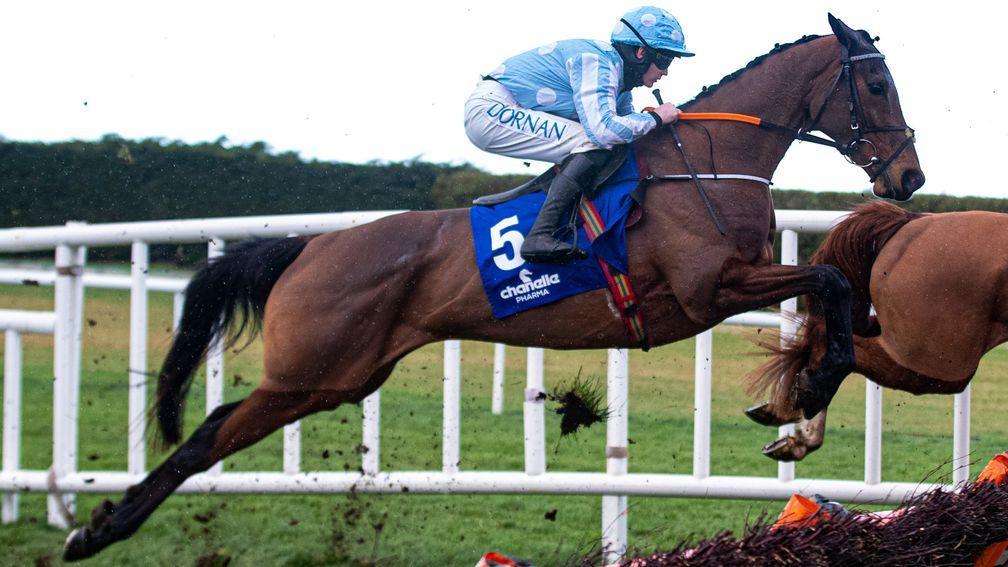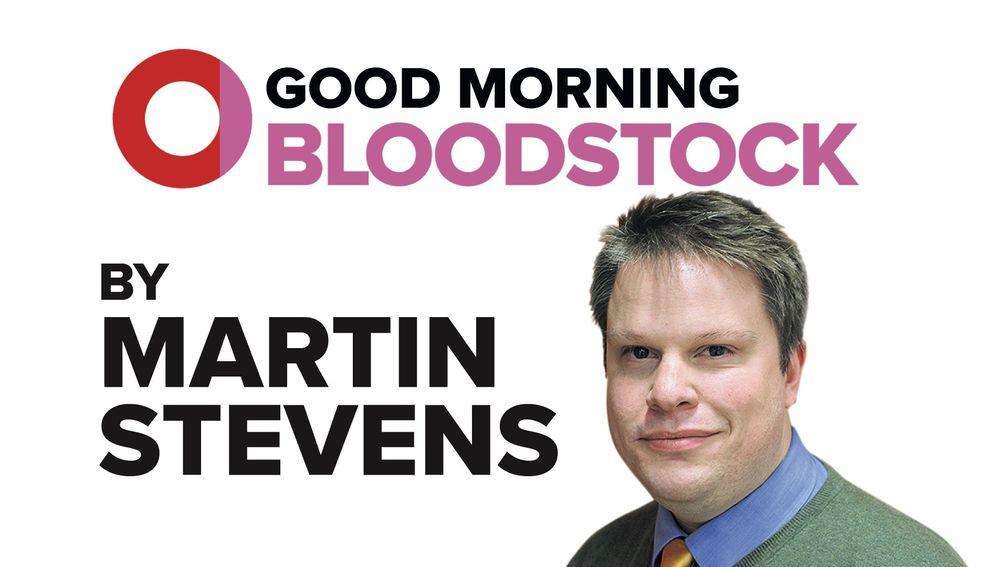'If the 7lb allowance for mares is unfair, it is because it is insufficient'
Bryan Mayoh with a thought-provoking guest article for Good Morning Bloodstock

Good Morning Bloodstockis Martin Stevens' daily morning email and presented here online as a sample.
This one, however, is a little different as Martin has brought along a guest writer, Bryan Mayoh, who addresses the subject of the mares' allowance in jumping - subscribers can get more great insight from Martin (and the occasional guest!) every Monday to Friday.
All you need do is click on the link above, sign up and then read at your leisure each weekday morning from 7am.
I’m passing the microphone to Bryan Mayoh, TBA board member and joint-breeder of Cheltenham Gold Cup hero Sizing John, for Tuesday’s Good Morning Bloodstock email.
He has taken to his beloved Excel spreadsheets – I’m not sure anyone has ever got more value out of a Microsoft Office package – to seek an answer to the topical question of whether the jumps mares’ allowance is fair. Take it away, Bryan...
Just about every time Honeysuckle wins a Grade 1 hurdle these days, various siren voices are swift to point out that she benefited from the 7lb mares’ allowance and might not have won without it.
The more determined of the ‘anti-allowance advocates’ then point out that three of the past six winners of the Champion Hurdle were mares (the others being Epatante and Annie Power) and that none won the race by the circa seven-length distance by which the mares’ allowance helped them.
Not mentioned is the fact that these are the only female winners of the Champion Hurdle since the 2004/05 season (when the mares' allowance was first increased from 5lb to 7lb) or that during this same period the number of winning mares in other major championship events was: Cheltenham Gold Cup, zero; Queen Mother Champion Chase, one - Put The Kettle On in 2021; Stayers’ Hurdle, zero; Ryanair Trophy, zero.
These results hardly support the premise that the jumps mares’ allowance is unfair.
The purpose of weight-for-age or sex (WFA) allowances in racing is to make due allowance for physical differences arising from maturity or gender, so that valid comparisons can be made between horses of different ages or sex – providing far more interesting and competitive racing than would be possible without such allowances. Handicaps, conditions races and Group/Grade 1 races having WFA allowances are important elements of the racing programme.
When the jumps mares’ allowance was increased from 5lb to 7lb, 18 years ago, it was stated that: "The ratings files show that the median rating of mares is 10lb lower than that of male horses. It is intended that this imbalance can be redressed to an extent by having a 7lb allowance across the board, which it is also hoped will encourage mares to stay in training."
Despite enhancements to the mares’ programme since then, the proportion of mares racing in jump races in Britain and Ireland is still only 20 to 25 per cent of the total, so encouragement for owners to race mares remains vital to the competitiveness of the racing programme.
The key question, then, is whether the present allowance is fair – should it be zero, the 5lb it used to be, the present 7lb, the 10lb found to apply 18 years ago, or some other figure?
Looking at Racing Post Ratings for the 2020/21 jump season gives an interesting answer to that question. I must confess I didn’t download the entire database of ratings from the Racing Post website, but I did download all those of 145 or more, these being most relevant to debate about the ‘fairness’ of the mares’ allowance in the principal WFA races.
This showed ratings for 461 geldings (92 per cent) and 40 fillies (eight per cent), a male/female ratio of almost 12 to one, compared with the above-mentioned proportions of geldings and mares racing in jump events, a ratio of three or four to one.
So, geldings are significantly over-represented in the upper echelons of jump race performance.
Now let’s look at other measures of relative male/female performance in jump racing. If we assume four times as many geldings as mares race over jumps in Britain and Ireland (assuming mares represent 20 per cent of runners), then it is reasonable to compare results for the forty 145+rated mares with the top 160 geldings by RPR in the same season.
The comparison indicates:
| Top 40 mares | Top 160 geldings | Difference | |
| Minimum | 145 | 156 | 11.0 |
| Maximum | 166 | 179 | 13.0 |
| Median | 149.5 | 160.5 | 11.0 |
| Average | 151.1 | 163.3 | 12.2 |
Whichever measure is taken, the difference is an advantage to geldings of 11-13lb.
If we assume three times as many geldings as mares racing over jumps in Britain and Ireland (mares representing 25 per cent of runners), then we might compare results for the forty 145+ rated mares with the 120 top-rated geldings. The comparison then becomes:
| Top 40 mares | Top 120 geldings | Difference | |
| Minimum | 145 | 158 | 13.0 |
| Maximum | 166 | 179 | 13.0 |
| Median | 149.5 | 163 | 13.5 |
| Average | 151.1 | 165.5 | 14.4 |
Here the difference (rounded) is an advantage of between 13lb and 14lb to geldings.
So, my conclusions are that:
- If the 7lb allowance for mares is unfair, it is only so because it is insufficient to offset the innate physical advantages enjoyed by geldings; to equalise opportunities, it should be 12-14lb! Mares do not enjoy an advantage against geldings from the 7lb sex allowance; instead, they are at a disadvantage against the most appropriate allowance.
- The recent Champion Hurdle successes of Annie Power and Honeysuckle do not indicate that the mares’ allowance unfairly favours mares. Rather, it reflects the fact that two of the best mares in jump racing history came along within a short time-span, competing against a good but not exceptional group of geldings. Even then, the 7lb allowance was important to their successes. Statistics for the other major Cheltenham championship races are far more indicative of the ‘fairness’ or otherwise of the present mares’ allowance.
What do you think?
Share your thoughts with other Good Morning Bloodstock readers by emailing gmb@racingpost.com
Must-read story
“Shastye looks fantastic and, if you looked at her, you'd think she was in her mid-teens at most,” reports Newsells Park Stud general manager Julian Dollar as he reveals the operation’s mating plans..
Pedigree pick
Stuart Crawford’s raiders at Ayr are worth following at the best of times, but One Cool Lady – one of two newcomers from his County Antrim yard in the mares’ bumper at 4.50 – commands even more respect on pedigree.
Richard Irwin’s homebred is by the great Flemensfirth out of My Cool Lady, who slammed future Grade 2-winning hurdler Shadow Eile by five and a half lengths to win a valuable Punchestown bumper in her own racing career. The dam is, moreover, an Old Vic full-sister to Grade 1-winning chasers In Compliance and One Cool Cookie.
Don’t miss ANZ Bloodstock News
Subscribe for free for the latest bloodstock news from Australia, New Zealand and beyond.
Make sure to read this week's Asia Bloodstock News
Sign up to our free weekly Asia Bloodstock News publication to receive news and features from all things racing and bloodstock across Mainland China, Japan, Hong Kong, Singapore and beyond.

Good Morning Bloodstock is our latest email newsletter. Martin Stevens, a doyen among bloodstock journalists, provides his take and insight on the biggest stories every morning from Monday to Friday
Published on inNews
Last updated
- ‘My phone hasn’t stopped ringing’ – Sergei Prokofiev move to Canada hailed as major boost for breeders
- 'This is a first step towards showcasing British NH stallions in a structured way' - inaugural National Hunt Stallion Open Weekend launched for 2026
- Irish Derby hero Los Angeles to stand under Coolmore's National Hunt banner in 2026
- Commissioning's half-sister Symbol Of Majesty makes spectacular debut at Chelmsford
- Group 2 winner Royal Scotsman to stand at Genesis Green Stud
- ‘My phone hasn’t stopped ringing’ – Sergei Prokofiev move to Canada hailed as major boost for breeders
- 'This is a first step towards showcasing British NH stallions in a structured way' - inaugural National Hunt Stallion Open Weekend launched for 2026
- Irish Derby hero Los Angeles to stand under Coolmore's National Hunt banner in 2026
- Commissioning's half-sister Symbol Of Majesty makes spectacular debut at Chelmsford
- Group 2 winner Royal Scotsman to stand at Genesis Green Stud